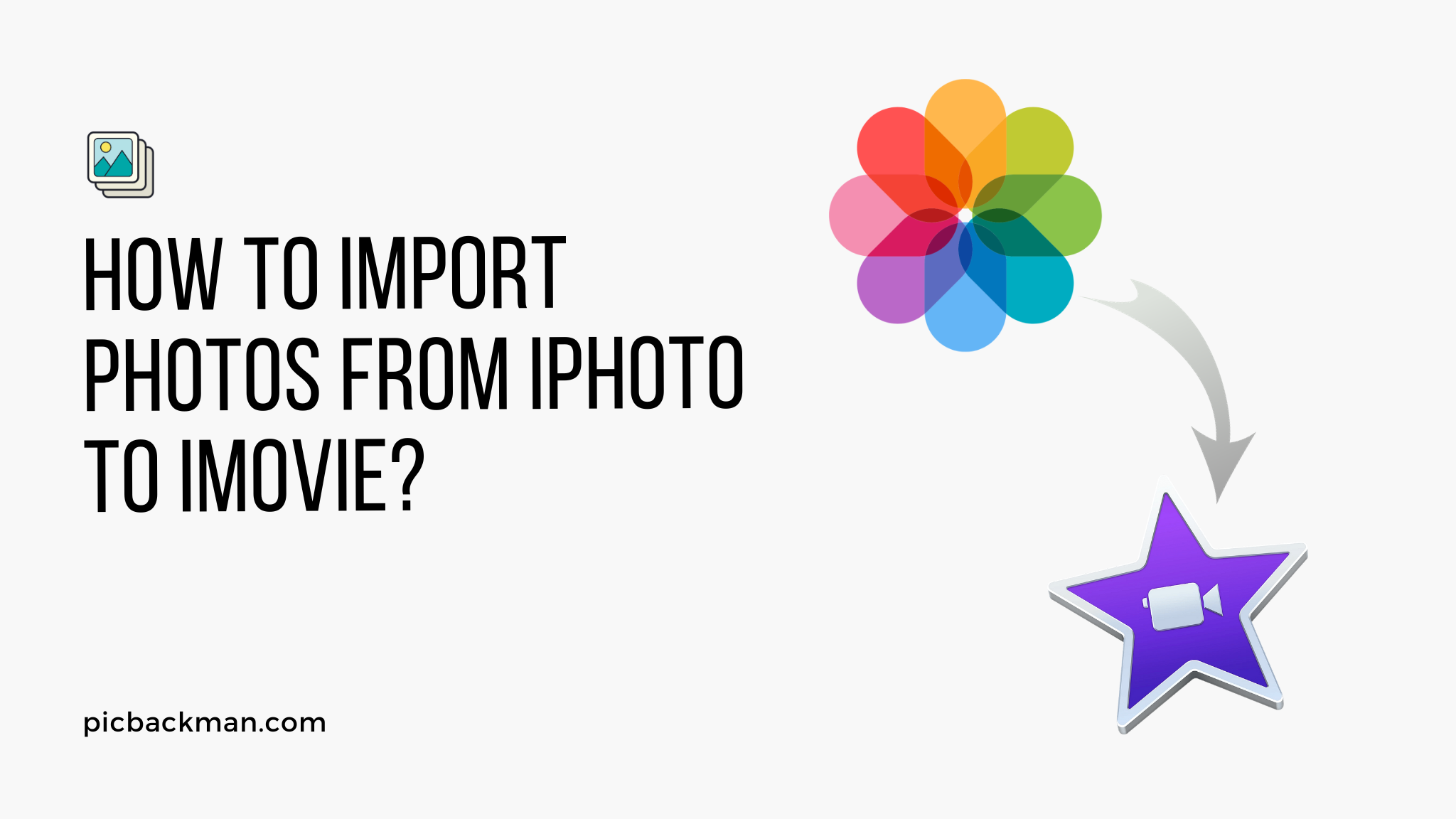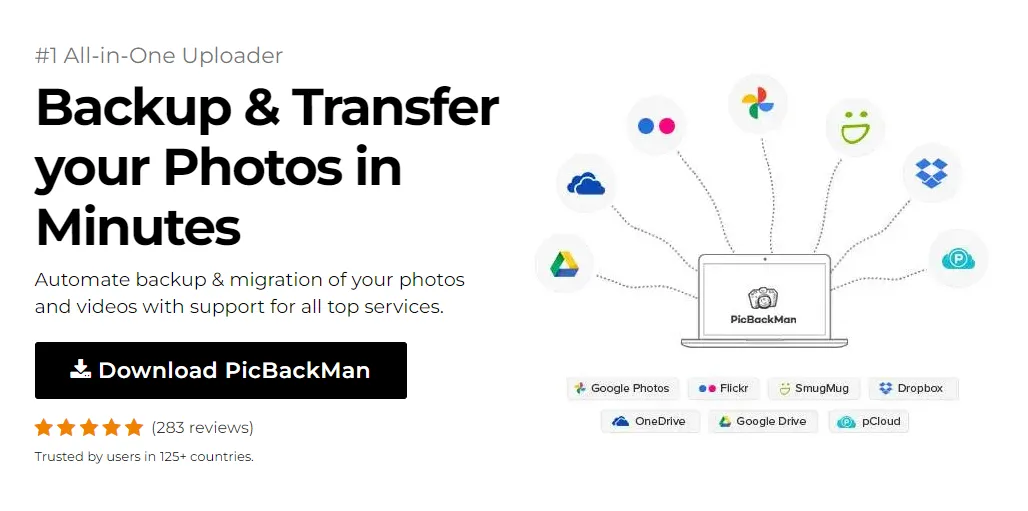
How to Import Photos from iPhoto to iMovie?


Importing photos from iPhoto to iMovie is a great way to enhance your home movies and video projects. With just a few simple steps, you can seamlessly add photos to your iMovie timeline and incorporate them into your videos. In this article, we'll walk you through the entire process of importing photos from iPhoto to iMovie, from preparing your photos to adding them to your project. Whether you're looking to create a picture slideshow video or just want to add a few photos here and there, this guide has got you covered. Let's get started!
Step 1: Prepare Your Photos in iPhoto
The first step is to open iPhoto and select the photos you want to import. You'll want to choose only the best, most relevant shots to include in your iMovie project. Here are a few tips for prep:
- Go through your iPhoto library and flag or select your desired photos.
- Consider creating a new folder or album in iPhoto to collect the photos for this particular video project. This will make them easier to locate.
- Make sure the photos you select are high resolution. The higher res, the better the quality when imported to iMovie.
- Optionally edit or enhance photos in iPhoto using tools like auto-enhance.
By taking the time to thoughtfully prepare your photos in iPhoto first, it makes the importing process much smoother.
Step 2: Export Photos from iPhoto
Once you've picked your photos, it's time to export them from iPhoto in preparation for import into iMovie. Here's how:
- With your desired photos selected, go to File > Export in the iPhoto menu.
- In the box that pops up, choose the folder you want to export the photos to. Desktop works well for easy access.
- Set the file format to JPEG and size to Large. This retains optimal resolution.
- Enable the File Names option to append unique names.
- Click Export.
iPhoto will now export copies of your selected photos to the designated folder. This separates them from your library so you can import them independently to iMovie.
Step 3: Create Your iMovie Project
If you haven't already, go ahead and open iMovie to create a new project. This will be the vessel for importing and organizing your photos.
- Launch iMovie on your Mac and click to create a new project.

- Choose Movie project since you'll be incorporating both photos and video clips.
- Select the desired Theme and Title then click Create.
Your new iMovie project will open up, ready to receive photos. Just make sure not to add any clips yet.
Step 4: Import Photos to iMovie
With your iMovie project open, it's time to import the photos you exported from iPhoto in step 2. Just follow these simple instructions:
- Navigate to your iMovie Import Media sidebar and click the Photos section.
- Find and select the folder that contains your exported iPhoto photos.
- Select all the photos in the folder then click Import Selected at the bottom.
All your selected photos will now be imported directly into your open iMovie project, ready for use in your movie!
Step 5: Add Photos to Your iMovie Timeline
Now for the fun part - adding photos to your actual iMovie project timeline!
- Click a photo thumbnail to select it then drag it down onto the timeline.
- Position the photo where you want it within your project.
- Repeat this process to add additional photos in any order you like.
- Optionally, you can add transitions between photos forsmooth visual effects.
Take your time arranging the photos until you're happy with the sequence. With all your shots imported and organized on the timeline, you're ready to complete your picture slideshow video!
Step 6: Adjust Photo Settings in iMovie
One of the great things about importing photos into iMovie is that you can customize their display settings right within the app:
- Click a photo thumbnail and go to the Inspector tab.
- Here you can adjust settings like scale, duration, framing, and more.
- Increase scale to zoom in on photos or pan and scan to focus on key elements.
- Extend duration for a slow pan or Ken Burns effect.
- Choose filters or adjust color styles to get the desired look and feel.
So have fun experimenting with the photo editing tools in iMovie to make your pictures really stand out!
Step 7: Add Transitions, Text & Music
To take your photo slideshow video to the next level, consider incorporating some other elements:
- Transitions: Add dissolves, slides, or fades between each photo for smooth visuals. Just drag onto the transitions bar.
- Text: Overlay text captions or headings to label, explain, or introduce certain photos.
- Background music: Select soundtrack songs or instrumentals from the iMovie audio library to complement your photo storytelling.
Use these additional tools to tie your whole iMovie photo video together into a cohesive, engaging viewing experience for your audience. The creative options are endless!
Step 8: Export and Share Your iMovie Photo Slideshow
Once your iMovie photo slideshow project is complete, it's time to get it out there for others to see! Simply follow these steps:
- Go to File > Share and select the desired export settings for resolution and file size.
- Choose the output format. Common options are MP4 for easy online sharing or QuickTime for highest quality.
- Select where to export the file such as a folder on your computer or connected drive.
- Finally, click Export to produce your finished photo slideshow video from iMovie!
Now you're ready to share your exciting iMovie photo creation with friends, family, clients, or the world. Import to YouTube, social media, or any platform you choose.
So that covers the complete process for seamlessly importing your photos from iPhoto into iMovie. With these simple steps, you can easily enliven your videos with memorable images. From collections of family snapshots to flashy product visuals, the possibilities are endless! So go ahead, import some photos today and take your iMovie projects to the next level.
Quick Tip to ensure your videos never go missing
Videos are precious memories and all of us never want to ever lose them to hard disk crashes or missing drives. PicBackMan is the easiest and simplest way to keep your videos safely backed up in one or more online accounts.
Simply Download PicBackMan (it's free!), register your account, connect to your online store and tell PicBackMan where your videos are - PicBackMan does the rest, automatically. It bulk uploads all videos and keeps looking for new ones and uploads those too. You don't have to ever touch it.
Conclusion
Importing photos from iPhoto to iMovie is a breeze when you follow the proper workflow. By taking time to organize and select your photos in iPhoto, exporting them to a separate file, then importing that file to your iMovie project, you can seamlessly enhance your videos with custom picture sequences. Using iMovie's editing tools like scale, duration, and filters, you can make the photos fit the story you want to tell. Finally, add some transitions and background music to tie it all together into a polished, cohesive video you can proudly share. So give your next iMovie the visual boost it deserves with photos from iPhoto! Just remember this guide and you'll be importing like a pro in no time.
FAQ
How do I select multiple photos to export from iPhoto?
In iPhoto, hold down the Command key on your keyboard to click and select multiple photos you want to export. You can also go to Edit > Select All or Edit > Select None to select or deselect all photos quickly.
What photo file format should I export from iPhoto?
JPEG is the best format to use when exporting photos from iPhoto for import into iMovie. JPEG retains high image quality while also keeping files sizes manageable for video projects.
Can I import photos directly from my iPhone to iMovie?
Unfortunately iMovie does not allow direct import from an iPhone camera roll. You first need to get the photos off your iPhone and onto your computer, either by syncing to iPhoto or airdropping them, before you can then import them to iMovie.
What happens to my photos in iPhoto after I export them?
Exporting photos simply creates copies of the files that will be used in iMovie. Your original photos will remain untouched and still be accessible in your iPhoto library.
How do I customize the display length of each photo in my iMovie slideshow?
After adding photos to your iMovie timeline, click the photo and go to the Inspector tab. Here you can set a custom duration in seconds to hold on the photo for however long you want.
Can I reorder photos or make edits after importing them to iMovie?
Yes, one of the great benefits of importing photos into iMovie is that you can still rearrange, trim, filter, and adjust them as needed right within your project until you finalize the video. Very flexible!
Backup & Transfer your Photos in Minutes
Automate backup & migration of your photos & videos with support for all top services.
Trusted by users in 125+ countries.










